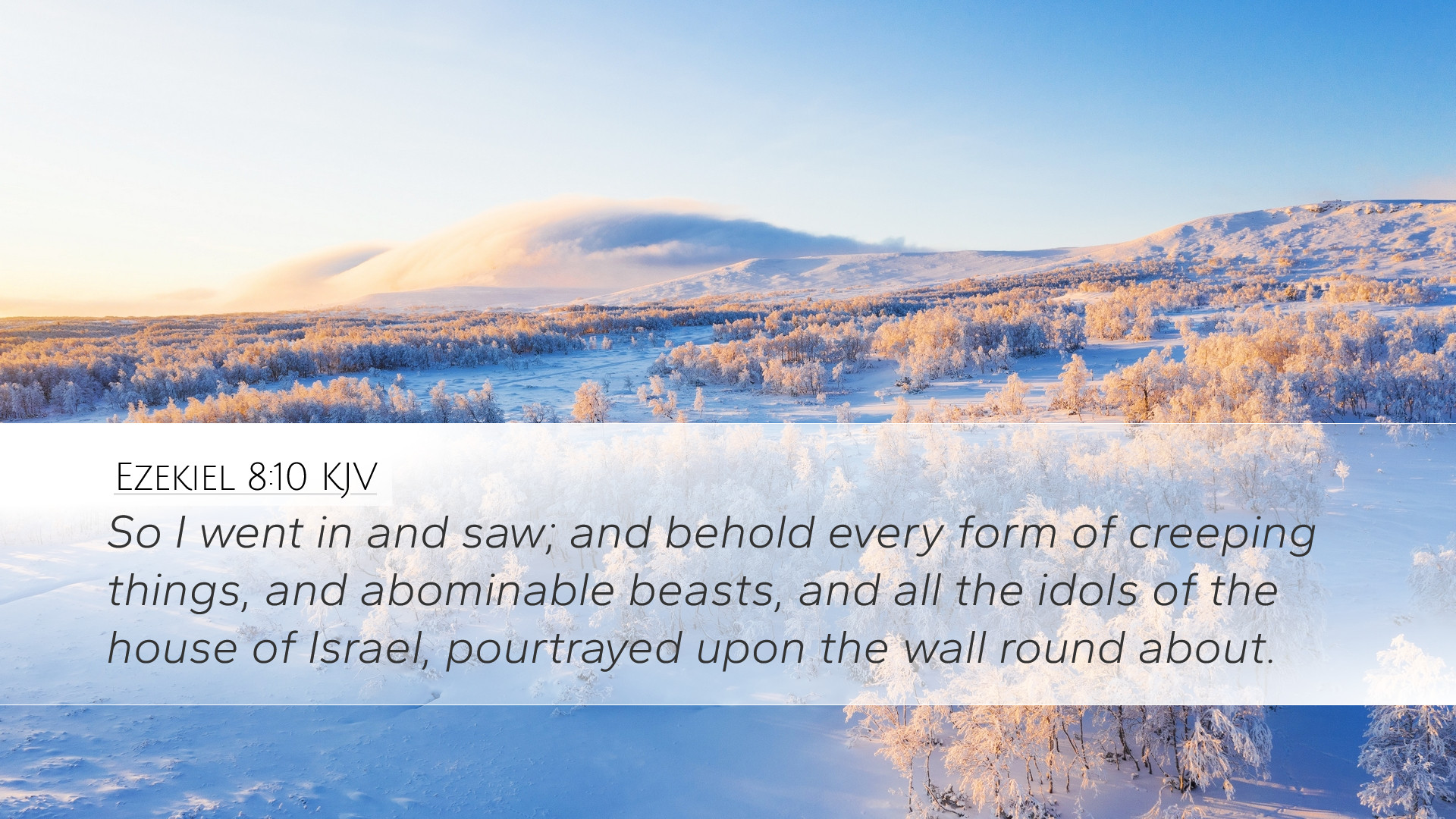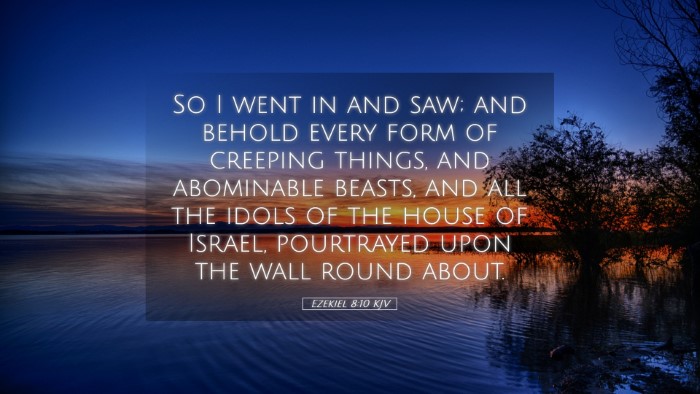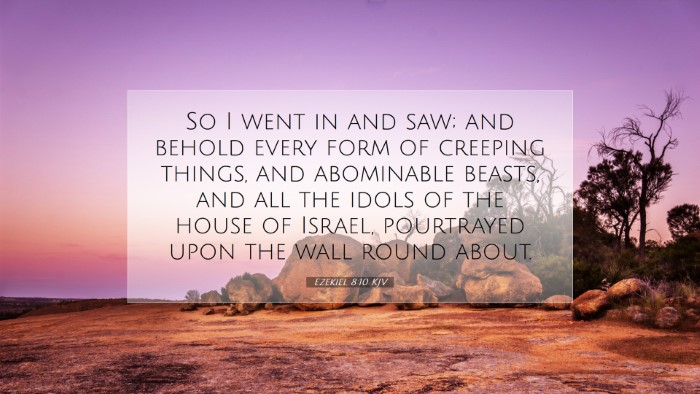Ezekiel 8:10 Commentary
Verse: "So I went in and saw; and behold every form of creeping things, and abominable beasts, and all the idols of the house of Israel, portrayed upon the wall round about." (Ezekiel 8:10)
Introduction
The prophetic vision of Ezekiel presents a significant crucial judgment against the idolatry present within Jerusalem. In this passage, Ezekiel describes the grotesque images representing various forms of idolatrous worship. This commentary aims to explore these images and their implications deeply, providing insights from various public domain commentaries.
Contextual Background
Ezekiel's prophecies were directed towards a people who had fallen into deep spiritual depravity, resulting in God's judgment. The vision described in Ezekiel 8 takes place in a time when Jerusalem was engulfed in idolatry, a situation that grieved God and called for immediate attention and correction.
Exegesis of the Verse
Matthew Henry notes that the vision Ezekiel experienced was not merely a sight but an invitation to witness the severity of the idolatry that had infiltrated the Temple. The “creeping things and abominable beasts” depict the heinous nature of these idols, which had taken the place of the true worship of Yahweh.
Albert Barnes highlights that the specific mention of “every form” indicates a comprehensive survey of the abominations practiced. It suggests that no aspect of idolatry was left unrepresented. The extravagance of their sin is emphasized through the extensive nature of their idolatrous practices inscribed within the holy precincts.
Adam Clarke elaborates that the “idols of the house of Israel” refers not only to foreign deities but also to the distorted worship of the God of Israel. The wall upon which these images were portrayed symbolizes not only physical defilement but also spiritual corruption, demonstrating how the people had turned their backs on God.
The Nature of Idolatry
- Symbolism of Abominations: The term "creeping things" alludes to the lowly nature of these idols, emphasizing their insignificance compared to the grandeur of God. Idolatry reduces the worship of the Almighty to the level of base creatures.
- Physical Representation: The portrayal of these images in the sacred space signifies profound contempt for God's holiness. The Temple, intended as a place of worship, was transformed into a gallery of abominations.
- Historical Context: This vision reflects the historical context where Israel was entangled in the influence of surrounding nations, succumbing to the allure of their false religions.
Theological Implications
The passage serves as a warning that resonates throughout the ages regarding the dangers of spiritual complacency and syncretism. Matthew Henry asserts that God's patience has limits, and this vision highlights the seriousness of idolatry.
Albert Barnes emphasizes the importance of divine revelation in guiding the faithful back to God. It showcases a need for clear discernment in worship practices, calling believers to reject any form of idolatry that corrupts true faith.
Adam Clarke points out that while we may not practice idolatry in a conventional sense, modern forms of idolatry may manifest in materialism and self-deification, thus challenging the contemporary believer to examine their hearts.
Applications for Today
Reflecting on Ezekiel 8:10, modern readers and leaders must consider the following:
- Examination of the Heart: Just as Ezekiel was shown the abominations, believers must regularly assess their devotion to God, recognizing anything that takes His place in their lives.
- Holiness in Worship: The call to purity in worship remains relevant. It prompts leaders and churches to ensure that their practices align with biblical teachings and honor God.
- Rejection of Cultural Idols: Like Israel, contemporary believers face cultural pressures that can lead to theological compromise. This passage calls for discernment and adherence to God’s word over cultural paradigms.
Conclusion
Ezekiel 8:10, with its vivid imagery and profound implications, challenges every generation to scrutinize their worship and the integrity of their faith. Drawing from the insight of public domain commentaries, we understand that God's judgments stem from His love for holiness and desire for His people to have no other gods before Him. As spiritual leaders, students, and scholars, learning from Ezekiel's vision can foster a deeper commitment to pure worship and an earnest pursuit of God's presence.


